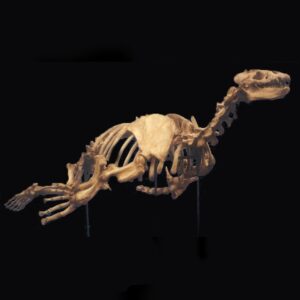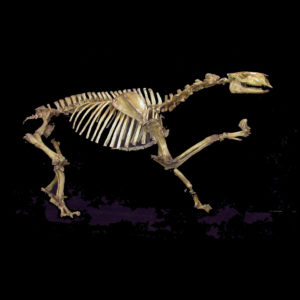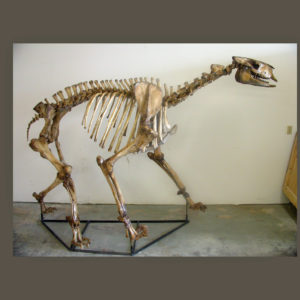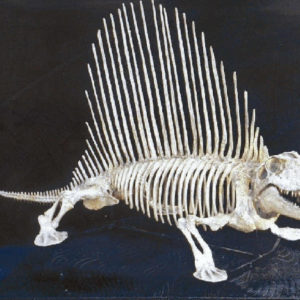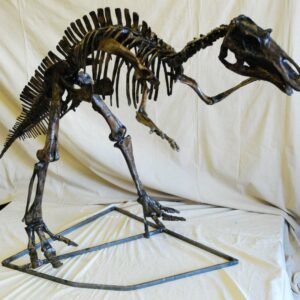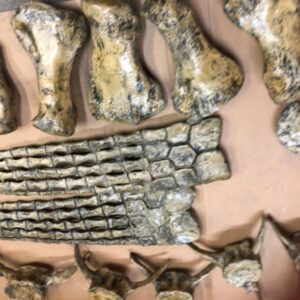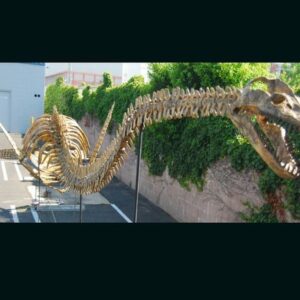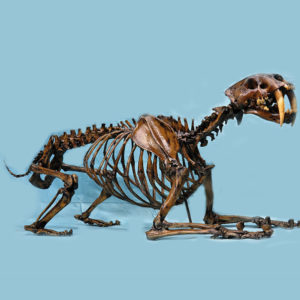All items sold on this website are polyurethane resin replicas, made in USA. No real or natural bone is available on this site.
Our Dinosaur Skeletons replicas are museum quality skeletons created with polyurethane resins, made in the USA. Skeletons and Skulls Superstore is the online leading supplier of precise museum quality dinosaur skeletons replicas.
We provide the finest skeleton specimens for professional educational facilities. Our superior osteological reproductions are used in the study of advanced anatomy, anthropology, archaeology, forensics, pathology, primatology and zoology.
Standard production time is 1 month, check with us to confirm build time and delivery.
To duplicate the detail of exquisite fossil dinosaur specimens, we use silicone rubber as a molding material. Once finished, all of our molds are hand poured with high quality solid-preforming casting medium.
A few of our dinosaur skeletons can be mounted from the ceiling, or in diffeferent positions. Our skeletons can be constructed according to your needs, allowing you to fashion a more dynamic exhibit.
Call 509-951-3557 we will help you place your order!
-
Allodesmus Kelloggi Mounted Skeleton
$19,700.00Allodesmus had the specific anatomical features found in modern polygynous pinnipeds: strong canines for fights between bulls and teeth with well-defined growth zones, a result from periodic fasting (in order…
-
Allodesmus Kelloggi Skeleton Panel
$1,950.00Allodesmus is an extinct genus of pinniped from the middle to late Miocene of California and Japan that belongs to the extinct pinniped family Desmatophocidae.
-
Allodesmus kelloggi Unmounted Skeleton
$16,980.00Allodesmus is an extinct genus of pinniped from the middle to late Miocene of California and Japan that belongs to the extinct pinniped family Desmatophocidae.
-
Chalicothere Moropus Elatus Disarticulated
$24,600.00Unlike modern perissodactyls, chalicothere moropus or Chalicotherium had clawed feet. They had longer forelimbs and shorter hind limbs, lower incisors that cropped food against a toothless pad in the upper…
-
Chalicothere Moropus Elatus Skeleton
$34,900.00Unlike modern perissodactyls, chalicothere moropus or Chalicotherium had clawed feet. They had longer forelimbs and shorter hind limbs, lower incisors that cropped food against a toothless pad in the upper…
-
Chasmosaurus Belli Skeleton Replica
$39,000.00The frill of Chasmosaurus Belli or chasmosaurine ceratopsian is very elongated and broader at the rear than at the front. It is hardly elevated from the plane of the snout….
-
Dimetrodon Limbatus Hayashibara Skeleton
$26,000.00The most prominent feature is the large neural spine sail on its back formed by elongated spines extending from the vertebrae. It walked on four legs and had a tall,…
-
Dimetrodon Limbatus Mounted Skeleton
$27,200.00The skull of Dimetrodon Limbatus is tall and compressed laterally, or side-to-side. The eye sockets are positioned high and far back in the skull. Behind each eye socket is a…
-
Dimetrodon Limbatus Skeleton
$26,000.00The skull of Dimetrodon Limbatus is tall and compressed laterally, or side-to-side. The eye sockets are positioned high and far back in the skull. Behind each eye socket is a…
-
Dwarf Mammoth Skeleton Replica
$15,400.00Dwarf elephants are prehistoric members of the order Proboscidea which, through the process of allopatric speciation on islands, evolved much smaller body sizes (around 3 ft. 3 in. to 7…
-
Eremotherium Laurillardi Skeleton
$40,000.00Eremotherium is an extinct genus of ground sloth of the family Megatheriidae, endemic to northern South America, Central America, and parts of southern North America during the Pleistocene epoch.
-
Eryops megacephalus Fossil Skeleton
$15,600.00Eryops megacephalus, the fossils of which are found mainly in early Permian (about 295 million years ago) rocks of the Texas Red Beds, located in Archer County, Texas. Fossils have…
-
Eryops megacephalus Skeleton Replica
$12,000.00Eryops megacephalus, the fossils of which are found mainly in early Permian (about 295 million years ago) rocks of the Texas Red Beds, located in Archer County, Texas. Fossils have…
-
Ichthyosaur Skeleton Panel
$1,740.00Ichthyosauria (Ancient Greek for fish lizard) is an order of large extinct marine reptiles sometimes referred to as “ichthyosaurs,” although the term is also used for wider clades that the…
-
Maiasaura Juvenile Skeleton Replica
$19,800.00Maiasaura lived in herds and it raised its young in nesting colonies. The nests in the colonies were packed closely together. The nests were made of earth and contained 30…
-
Nyctosaurus Skeleton Panel
$524.00The jaws of Nyctosaurus or Nyctosaurus gracilis were long and extremely pointed. The jaw tips were thin and needle sharp, and are often broken off in fossil specimens, giving the…
-
Plesiosaurus Disarticulated Skeleton
$72,000.00Plesiosaurus is a genus of extinct, large marine sauropterygian reptile that lived during the Early Jurassic. It is known by nearly complete skeletons from the Lias of England. It is…
-
Plesiosaurus Skeleton Mounted Replica
$84,000.00Plesiosaurus is a genus of extinct, large marine sauropterygian reptile that lived during the Early Jurassic. It is known by nearly complete skeletons from the Lias of England. It is…
-
Saber-Tooth Cat Skeleton Unmounted
$8,000.00It is one of the most famous prehistoric mammals and the best known Saber-tooth Cat. Although commonly known as the Saber-toothed Tiger, it was not closely related to the tiger…
-
Uintatherium Mounted Skeleton Replica
$34,000.00Uintatherium (“Beast of the Uinta Mountains”) is an extinct genus of herbivorous dinoceratan mammal that lived during the Eocene epoch.
-
Uintatherium Unmounted Skeleton Replica
$24,000.00Uintatherium (“Beast of the Uinta Mountains”) is an extinct genus of herbivorous dinoceratan mammal that lived during the Eocene epoch.
-
Velociraptor Mounted Skeleton
$6,200.00Velociraptor mongoliensis, like other dromaeosaurids, had a large manus (‘hand’) with three strongly curved claws, which were similar in construction and flexibility to the wing bones of modern birds. The…
-
Velociraptor osmolskae Skeleton Plaque
$1,750.00Velociraptor mongoliensis, like other dromaeosaurids, had a large manus (‘hand’) with three strongly curved claws, which were similar in construction and flexibility to the wing bones of modern birds. The…





